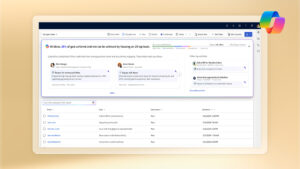The new Item Categories feature replaced the Product Group feature in Dynamics NAV 2017
To help companies maintain an overview of their items and to help them sort and find items, it is useful to assign item attributes to items and to organize them in item categories. When customers inquire about an item, either in correspondence or through a web shop, they can then ask or search according to attributes, such as height and model year. In such a system, a category is a parent in a hierarchy of loosely coupled child attributes.
To provide this functionality, a new design of the existing Item Categories feature was released together with the Item Attributes feature in Microsoft Dynamics NAV 2017.
Before we introduced hierarchy functionality with the new Item Categories feature, the Product Group feature was used to design a one-level hierarchy by making a strong coupling between an item category (the parent) and product groups (the children). The Product Group feature was also used to carry the Warehouse Class Code value to specify the type of storage to use for a specific product group in connection with warehouse functionality.
Because the new Item Categories feature provides multi-level hierarchy functionality, and thereby does the same and more than the Product Group feature, we have deprecated the Product Group feature in Dynamics NAV 2017.
The change consists of the following:
- The Warehouse Class Code field is moved to the Item and Item Template records. Before, the field was on the Product Group record.
- The warehouse business logic is changed so that it uses the Warehouse Class Code value directly on the Item record.
- The Product Group feature is removed from the user interface by making the Product Group Code field invisible on the Item Card page, and by removing the Product Groups page.
- The actual Product Group table and fields that relate to it are still in the database, but not accessible from the user interface.
The upgrade to Dynamics NAV 2017 from an earlier version does the following:
- Upgrades the existing product groups to become first-level children of the respective item categories.
- Moves the Warehouse Class Code value to the items that have a specific product group. At the same time, creates an item template that has that warehouse class code.
- For items that had both an item category code and a product group code, the upgrade puts the value that used to be in Product Group Code field into the Item Category Code field, because the related product group became the child of the related item category. The idea is that for the upgraded item, the Item Category Code field holds the most granular item category that the item belongs to (this used to be the product group). You can navigate to higher-level item categories by using the Parent Category field on the Item Category page.
Related change: Removing default setup fields from the Item Category record
Before we implemented the Item Templates feature, the values on the Item Category record, opened with the Item Category field, could be used to specify the following default setup values on item cards as belonging to the item category in question:
- Field 4, Def. Gen. Prod. Posting Group
- Field 5, Def. Inventory Posting Group
- Field 6, Def. Tax Group Code
- Field 7, Def. Costing Method
- Field 8, Def. VAT Prod. Posting Group.
The five default setup fields are removed from the Item Category record and the related pages. The functionality is replaced with the Item Templates feature, and the Item Category field is now used with the Item Categories feature only, as described in the previous section. We encourage users to specify the above setup values by filling in the respective fields on item templates.
The change consists of the following:
- Fields 4, 5, 6, 7, 8 are removed from the Item Category record and related pages.
- Nonstock items now use the Item Templates feature. Before, nonstock items used item categories as defacto templates for these fields.
- The upgrade to Dynamics NAV 2017 from an earlier version will turn existing item categories that are used on nonstock items into item templates with the necessary default setup fields filled in.
We apologize that we did not publish this information at the time when we released Dynamics NAV 2017.
The NAV team




